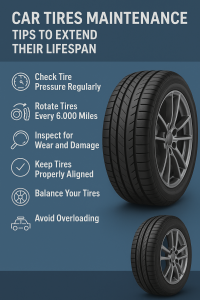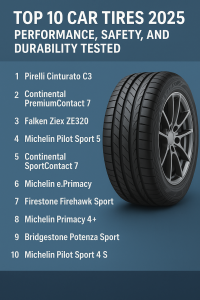Car Insurance 101: A Complete Guide for Beginners

Car Insurance 101: A Complete Guide for Beginners-When you first get behind the wheel of a car, one of the most important things you’ll need to consider is car insurance. Whether you’re a new driver or someone just looking to change their policy, understanding the basics of car insurance can save you money, time, and potential hassle in the future. In this guide, we’ll break down everything you need to know about car insurance, from what it covers to how to choose the right policy for your needs.
What is Car Insurance?
Car insurance is a contract between you and an insurance company that helps protect you financially if your car is damaged, stolen, or involved in an accident. It also provides coverage for injuries and damages caused to other people or property in an accident where you are at fault. In exchange for protection, you pay a monthly premium to the insurance company. (Read More: Need a Car Key? Find an Automotive Locksmith Near Me Now!).
Types of Car Insurance Coverage
When you shop for car insurance, you’ll encounter several types of coverage. Understanding what each one covers is key to finding the right policy for your needs.
1. Liability Coverage
This is the most basic type of car insurance and is often required by law in many places. Liability coverage helps pay for damages or injuries you cause to others in an accident. There are two types of liability coverage:
- Bodily Injury Liability: Covers medical expenses, lost wages, and other costs for injuries you cause to others.
- Property Damage Liability: Covers the cost of repairing or replacing property you damage, such as another vehicle or a fence.
2. Collision Coverage
Collision insurance helps pay for repairs to your car if it’s damaged in an accident, regardless of who is at fault. This can be especially useful if your car is newer or has a high market value. If you’re financing or leasing your vehicle, your lender may require this coverage. (Read More: Top 10 Car Brand Logos and What They Represent in 2024).
3. Comprehensive Coverage

Comprehensive insurance covers damage to your car that isn’t caused by an accident. This includes theft, vandalism, natural disasters, fire, and falling objects. While it isn’t required by law, it can be a valuable option if you want to protect your car from a wide range of risks.
4. Uninsured/Underinsured Motorist Coverage
If you’re involved in an accident with someone who doesn’t have enough insurance (or no insurance at all), this type of coverage helps pay for your medical bills and car repairs. It’s especially important because many drivers on the road don’t carry adequate insurance, putting you at risk of being financially responsible for their mistakes.
5. Personal Injury Protection (PIP)
PIP insurance is designed to cover medical expenses for you and your passengers, no matter who is at fault in an accident. This can include hospital bills, rehabilitation, lost wages, and even funeral expenses in case of a serious accident. PIP is required in some states, but optional in others.
6. Medical Payments Coverage
Similar to PIP, medical payments coverage helps pay for medical bills after an accident. However, PIP covers a broader range of expenses, including lost wages, while medical payments coverage is typically limited to medical and funeral costs.
How to Choose the Right Car Insurance for Your Needs
Choosing the right car insurance policy can be a bit overwhelming, but breaking it down step by step can make the process easier. Here are a few tips to help you make the best decision:
1. Understand Your State’s Minimum Requirements
Before you start shopping for car insurance, you’ll need to know what type of coverage is required in your state. Every state has different minimum coverage requirements, so be sure to familiarize yourself with your state’s laws. In most cases, at least liability insurance is required by law, but additional coverage options like collision or comprehensive may be optional. (Read More: Top 10 Car Rims Spinners Transforming Vehicle Aesthetics in 2025).
2. Consider Your Driving Habits
Think about how often you drive, where you drive, and how much coverage you need. If you have a long commute or live in an area prone to accidents or natural disasters, you might want to invest in more comprehensive coverage. On the other hand, if you only use your car occasionally, a more basic policy may be sufficient.
3. Evaluate Your Car’s Value
The value of your car plays a big role in deciding the level of coverage you need. If your car is worth less than $2,000, you might want to skip collision or comprehensive coverage and save money on premiums. However, if your car is new or high in value, it’s worth considering comprehensive coverage to protect your investment.
4. Shop Around for Quotes
Once you have an idea of the coverage you need, it’s time to start shopping around. Insurance companies have different rates for the same types of coverage, so getting multiple quotes is essential to finding the best deal. Make sure to compare the premiums, coverage options, and customer reviews before making your final decision.
5. Look for Discounts
Many insurance companies offer discounts for a variety of reasons, including a good driving record, having multiple policies with the same company, or even having a car with certain safety features. Be sure to ask about any discounts you might be eligible for to help reduce your premium costs.
Factors That Affect Your Car Insurance Rates
Several factors influence how much you’ll pay for car insurance. Understanding these factors can help you make adjustments to lower your premium:
1. Driving Record
Your driving history is one of the most significant factors in determining your car insurance rates. If you’ve been involved in accidents or have traffic violations on your record, you may pay higher premiums. On the flip side, a clean driving record will help you secure lower rates.
2. Age and Gender
Statistical data shows that younger drivers, especially males, tend to be involved in more accidents, making them higher risk for insurers. As you get older and gain more driving experience, your rates may decrease.
3. Car Model and Age
The make, model, and age of your car all influence your insurance premium. Newer, more expensive cars often come with higher premiums because they’re costlier to repair or replace. Cars with high safety ratings or that are equipped with anti-theft features may also qualify for discounts.
4. Location
Where you live can impact your car insurance rates. Cities with higher rates of accidents, theft, or vandalism typically have higher premiums. If you live in a rural area, your rates may be lower.
5. Credit Score
In many states, your credit score is taken into account when determining your car insurance rates. A higher credit score often leads to lower premiums, as it’s seen as an indicator of financial responsibility.
The Bottom Line: Car Insurance is Essential
While car insurance is a legal requirement in most states, it also provides valuable protection for your vehicle and your financial well-being. Understanding the different types of coverage, how to choose the right policy, and what factors affect your rates can help ensure you get the best protection at the best price. Whether you’re a new driver or just looking to switch insurers, having the right car insurance in place can offer peace of mind on the road.







